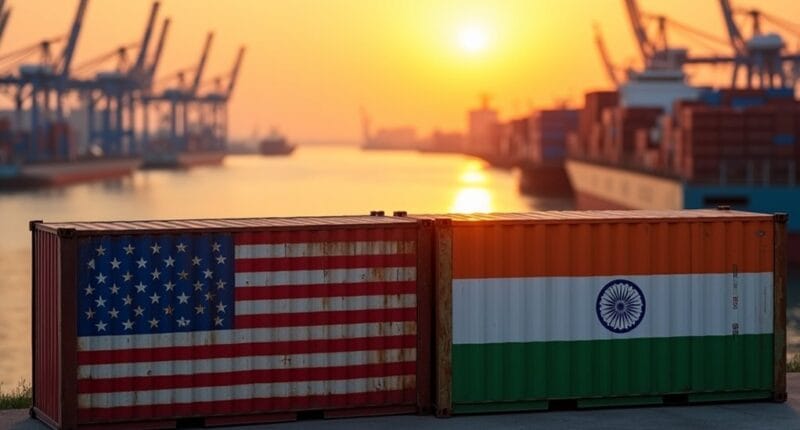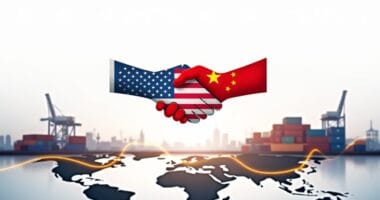Despite Trump’s bold claims at a Qatar business gathering, India never offered zero tariffs on American goods. Indian officials, led by Jaishankar, quickly shot down this assertion. What’s actually on the table? A phased reduction that would cut tariffs on 60% of U.S. goods initially, potentially expanding to 90% over time. The current 13% tariff differential could drop below 4% – significant, but nowhere near zero. The real story runs deeper than headline-grabbing statements.

A bold claim about trade with India has put former President Donald Trump in the hot seat.
During a business gathering in Qatar, Trump announced that India had offered a deal featuring “zero tariffs” on American goods – a statement that quickly raised eyebrows among trade experts and Indian officials alike.
The reality? Not quite what Trump described.
India’s External Affairs Minister Jaishankar swiftly pushed back against Trump’s characterization, making it clear that while negotiations are ongoing, no such zero-tariff agreement has been reached.
Talk about awkward.
The Commerce Ministry of India has remained notably silent on details of any proposed trade agreement.
The ongoing bilateral discussions from April 23-25, 2025 in Washington have focused on both tariff and non-tariff matters.
What India actually proposed was eliminating tariffs on 60% of U.S. goods in the first phase, eventually extending preferential access to nearly 90% of American imports.
India aims to slash tariffs on most U.S. imports, starting with 60% of goods and expanding to 90% over time.
It’s a significant move, sure, but it’s not the “charging us no tariff” scenario Trump painted.
The goal appears to be reducing the average tariff differential between the two countries to under 4% from the current 13%.
The timing of Trump’s comments is interesting, coming during a 90-day tariff pause window that Washington granted as a goodwill gesture.
Before this pause, India had been slapped with additional duties of up to 26% on various products, from seafood to industrial metals.
Apple’s manufacturing plans in India have somehow gotten tangled up in this mess.
Trump mentioned having “a little problem with Tim Cook” over Apple’s Indian manufacturing expansion.
Apparently, he urged Cook to keep production stateside, resulting in a reported $500 million investment commitment in U.S. operations.
The whole situation highlights the complex dance of international trade negotiations.
While India’s proposal would indeed represent a major shift in trade policy, it’s far from the completely tariff-free wonderland Trump described.
Washington hasn’t even fully committed to India’s request for protection from future U.S. tariff hikes – something they haven’t granted even to close allies like the UK.
One thing’s clear: when it comes to international trade deals, the devil’s in the details – and sometimes, in the telling of those details.


